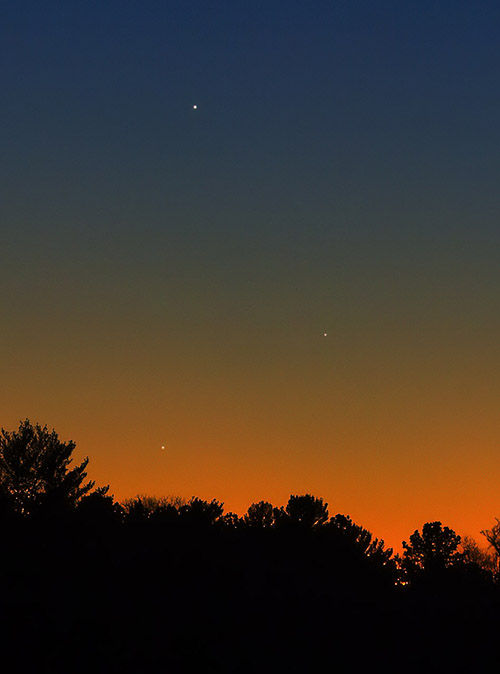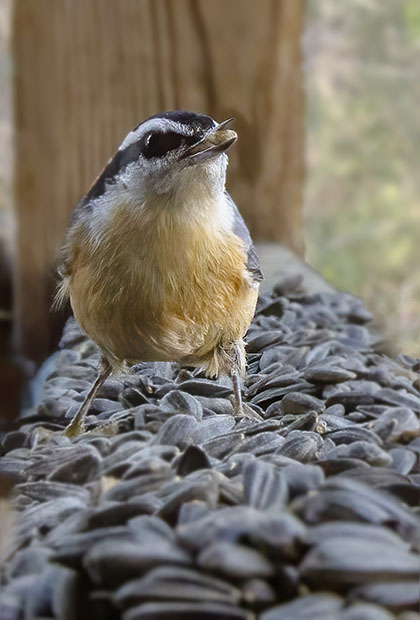The "Christmas Star," Act Two
2021/01/09. The Grand Conjuntion contiunues. Beginning tonight, Mercury joins the mix. I expected a bright-ish triangle low in the western sky: Mercury at bottom, dim Saturn, and bright Jupiter, all hanging low in the glow of sunset. And, miracle of miracles, the weather cooperated.
I went to my "desperation station" when I need a low western hoirizon: a tiny patch of sand at the north end of Castle Bridge, strewn with deadwood and beer bottles washed up by waves and wakes and by wind running down the long reach of the lake. The beach, such as it is, is guarded by briars, and harassed by heavy traffic on the road just above. The high peaks of the Black Mountains and the treetops along the south shore frame a wide sky.

I waited 90 minutes. I spent some of it looking for the best vantage and most of it just hanging out waiting for dark. Jupiter finally appeared (I say "finally" because it was cold, windy, and damp out there), but Saturn and Mercury never did. Binoculars would have made quick work of them all, but I wanted to carry as little as possible. The driftwood, beer bottles, and briars are not much of a barrier during the last light of evening, but while retreating in rapidly fading twilight, they are treacherous. Anyway, for all that, I thought the night was a bust, that I might find the other planets in the photos, but I didn't think they'd amount to much. I shot several at different settings, thinking I would need to stack them to pull the fainter planets out. But the results aren't bad, as it turns out. All the following images come from a single frame.

Jupiter appears. Even Jupiter is faint at this scale. The other planets are in
the photo, somewhere, and can be pulled out with some aggressive
post-processing. Or, as astrophotographers would say,
some aggressive processing.

Same photo, cropped and seriously stretched.
1/4s, F8.0, 70-200mm @ 98mm, ISO 400, Canon 6D

Same photo. Cropped and stretched a little differently.
Bottom to top: Earth, Mercury, Saturn, Jupiter.

The hell? What's this doing here? Experiments with a
wireless release and intervalometer. Works a treat!
No more vibration or entangled cords. Used for the
photos up top, too.
:: top ::
My deep-sky photos are made with a variety of sensors and optics. Deepest images come now from a ZWO ASI1600MM Cooled Pro CMOS camera. A good many images come from an unmodded Canon 6D. Video and video extracts begin in a Canon EOS M, usually running in crop mode via Magic Lantern firmware. Telescopes include an AT10RC (a remarkable budget Ritchey-Chretien astrograph), an Orion 10" F4 Newtonian, and a pair of apochromats: a TMB92SS and a AT65EDQ. A very early Astro-Physics 5" F6 gets some use, too. So do lots of camera lenses on both the ASI1600 and the Canon 6D. A solar Frankenscope made using a 4" F10 Orion achromat and the etalon, relay optics, and focuser from a Lunt 60 feeding a small ZWO camera will see more action as the Sun comes back to life. Mounts include an iOpton SkyTracker (original model), a Losmandy G11 (non-Gemino), and an Astro-Physics Mach1 CP3. Software is PixInsight for heavy lifting and Photoshop for polish.